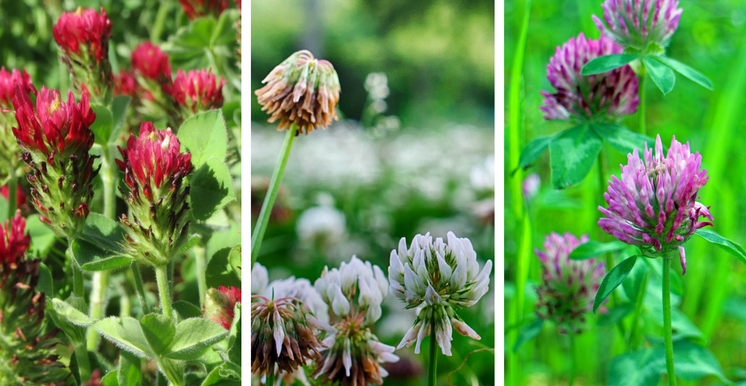
Foraging Ahead With Dr. Don Ball: Key Characteristics Of Clovers
Interest in growing clovers as companion species to forage grasses has increased in recent years. Reasons include that in many situations they can extend the growing season and/or increase total forage yield of pastures. In addition, in connection with Rhizobium bacteria, they have the unique ability to obtain nitrogen from the air and “fix” it in nodules on their roots, thus reducing the amount of nitrogen fertilizer that otherwise might need to be applied. Perhaps most importantly, they produce high quality forage, thus often substantially improving animal performance.
Clovers are therefore highly desirable plants to have in pastures or hay fields, but as compared to forage grasses they generally require a higher level of management and are more fickle. Consequently, it is important to plant them on sites where they are well adapted, and use them in situations in which they are well suited to be used. Otherwise, the results are likely to be disappointing. The accompanying table provides a summary of optimum soil attributes for, and key characteristics of, several clovers commonly grown in the Southeast.
Establishment of clovers in existing perennial grass sods generally requires suppressing the grass by tillage, trampling and heavy grazing by livestock, or use of herbicides to suppress or kill existing grass. In the case of seeding clovers into warm season perennial grasses, failure to remove enough grass residue from the soil surface is a common cause of stand failure.
Planting at the recommended time and using the proper seeding rate and depth for a given clover are critically important. Such information is readily available from county Extension offices and elsewhere. In the Southeast, most clovers commonly grown for forage purposes are planted in the autumn.
Once a clover stand has been established, management should favor the clover. Clovers generally require higher levels of phosphorus and potassium, as well as a higher soil pH than grasses. Excessive nitrogen fertilization of a grass/clover mixture will often result in loss of the clover stand due to grass competition.
Optimum grazing management varies among clovers, but except in the case of white clover and ball clover, close continuous grazing usually favors sod-forming grasses over clovers. Even with good management, a clover stand will probably not last forever, so periodic replanting will be required.
Preferred Soils And Plant Attributes Of Selected Clovers*
Preferred Soil Attributes Plant Attributes
| Clover1 | pH | Texture | Drainage | Maturity | Hard Seed | Cold Tolerance2 |
| Arrowleaf | 6.0-7.0 | sand, loam | good | late | high | good |
| Ball | 5.5-8.0 | loam, clay | fair | medium | high | good |
| Berseem | 6.5-8.0 | loam, clay | poor | late | low | poor |
| Crimson | 6.0-7.0 | sand, loam, clay | good | early | low | good |
| Persian | 6.0-8.0 | loam, clay | poor | medium | medium | fair |
| Red | 6.0-8.0 | loam, clay | good | late/biennial | low | good |
| White | 6.0-7.5 | loam, clay | poor | late/perennial | high | good |
1The clovers listed are annuals except for red (normally lives 2 years on suitable sites and with proper management) and white (which is a perennial).
2In areas south of Tennessee.
*Adapted from G.W. Evers, Preferred Soil Types For Legume Species, Texas A&M University Technical Report 92-1.
__________________
Foraging Ahead is a column presented by Ragan & Massey and written by Dr. Don Ball, Professor Emeritus at Auburn University. Dr. Ball is one of the authors of the popular book “Southern Forages” available here.